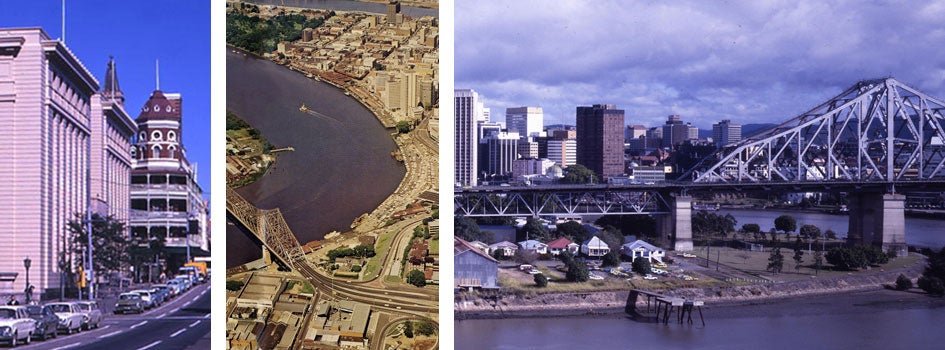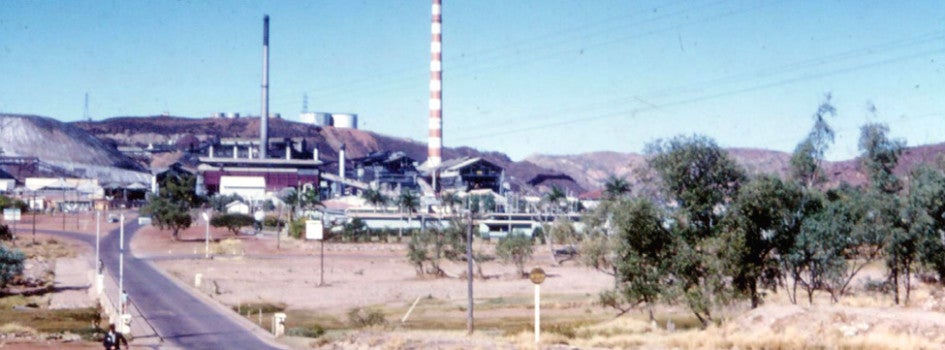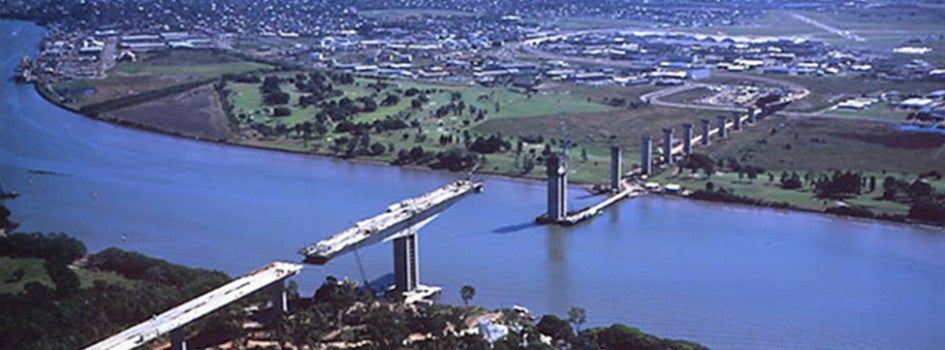History - 1964-1987
Foundations to secure Queensland's financial success

Queensland Treasury Corporation (QTC) originated through strategies formulated over three decades by a dynamic team led by inaugural (and now Foundation) Chairman, Sir Leo Hielscher AC—one of Queensland’s longest-serving public servants.
Since its inception in 1988, QTC has developed an excellent reputation in the domestic and international financial marketplace; a standing that has been crucial to its success in funding Queensland’s development. QTC clients from across the Queensland public sector have benefited from some of the lowest-cost funds available, facilitated by QTC’s unique economies of scale and scope.
Today, QTC provides financial services to the Queensland Government and the State’s public sector entities, bringing together a range of financial operations as an autonomous and accountable central financing authority. QTC provides financial solutions that deliver whole-of-State outcomes, working with the State, its clients and investors to secure Queensland’s financial success.
This is the QTC story so far.
Back to topQTC's early foundations-the QGDA

In the early 1960s, the Queensland Government was the first state government in Australia to centralise its cash management functions and optimise returns from the investment of the Government’s surplus cash balances. This function was undertaken by the Investments Branch of the Queensland Treasury Department, with funds invested in fixed-interest securities and the short-term money market.
In 1981, the Australian Government’s Campbell Committee undertook an extensive examination of the workings of the Australian Financial System and proposed the establishment of state-based central borrowing authorities. The subsequent Campbell Report highlighted the significant economies of scale and benefits that could be achieved by introducing central borrowing authorities in each state. The Report also outlined how rationalisation could dispense with competition between local and semi-government authorities on the open market, ensuring that smaller authorities would not be disadvantaged due to their size. The Report foresaw that central borrowing authorities would increase the marketability of each state’s credit, making their securities more attractive to investors and enabling some reduction in yields, with subsequent savings.
In 1984, to centralise the management of its liabilities, the Queensland Government established QTC’s predecessor, the Queensland Government Development Authority (QGDA). The QGDA was the first operational central borrowing authority in Australia, formed primarily in response to the deregulation of the Australian financial market occurring at the time and the recommendations from the Campbell Report.
The QGDA’s objective was to support the development of, and provision of financial services in, Queensland, by raising funds both onshore and offshore to lend to various Queensland statutory bodies. All borrowings by the QGDA were guaranteed by the Treasurer on behalf of the Queensland Government.
The QGDA was administered by officers of the Queensland Treasury Department. Financial transactions associated with the operations of the QGDA were processed through the Queensland Government Development Authority Fund—a trust maintained within the Public Accounts of Queensland. In addition to its central borrowing agency function, the QGDA from time to time entered into other financial arrangements consistent with its role of assisting the development of Queensland.
Back to topInnovative funding solutions to support Queensland's economic development

While it may be difficult to imagine now, Queensland half a century ago was Australia’s poorest state. Recognising the need to stimulate and develop a primarily agrarian economy, the Queensland Government turned to new economic opportunities to drive the State’s growth in a vibrant and sustainable way. With an abundance of natural resources, Queensland’s Treasury Department began the process of developing economic policy to support the State’s mining industry as the foundation for future economic growth.
The Queensland Government quickly recognised that growth in the mining industry—and the State’s economy in general—resulted in an imminent need for supporting infrastructure upgrades. They adopted an approach that embraced new development and fostered the industry and economic growth.
Mount Isa Mines was a good case in point: with its rail links to the coast in need of improvement, major redevelopment of the vital mine-to-port supply chain was required to ensure the supporting infrastructure met expected demands. With such a significant project, the financing solution required for this infrastructure was tasked to Sir Leo Hielscher AC, Queensland’s then Under Treasurer.
When initial plans to seek funding through the Commonwealth Loan Council proved unsuccessful and, in the face of strict Australian Government requirements for the borrowing of expensive domestic money, the Queensland Treasury Department took the unprecedented step of applying for World Bank funding. This ultimately prompted a reconsideration of the initial loan application to the Australian Government and, with the loan in place, the Mount Isa Mine rail infrastructure upgrade commenced.
This proved a significant step forward in Queensland’s mining industry development, setting the foundation for other major infrastructure funding proposals to be negotiated with the Australian Government. This project, and many others subsequently instigated by Queensland Treasury Department, highlighted the value of the Government’s new commitment to innovation and its desire to seek more efficient and effective funding solutions for the benefit of the State’s future economic growth.
Back to topExpertise to sweeten a deal gone sour

Recognising that the development of innovative funding solutions for the State of Queensland required specialist expertise and talent, Sir Leo Hielscher AC, as Under Treasurer, adopted a policy of hiring new university graduates. Although considered quite radical at the time, this policy quickly paid off, with the employment of talented people such as John Hall, who eventually rose to become Under Treasurer of Queensland upon Sir Leo’s retirement in 1988.
In 1979, John Hall hired Stephen Rochester to be a member of the Department’s new Intergovernmental Relations section. Stephen (who later became QTC’s first Chief Executive Officer) had been working as an economist for the Bank of New South Wales for more than a decade and brought expertise that would break new ground for Queensland—with innovative ideas for sources of funding, particularly offshore.
In the late 1970s, the Queensland Treasury Department negotiated the first major deal that would export sugar to Japan on a large scale. The profit margin on the deal allowed the Queensland Treasury Department and the Queensland Sugar Board to plan the construction of the Mourilyan and Mackay Sugar Terminals and the Lucinda Bulk Sugar Loading Jetty in Far North Queensland—at the time, the longest structure of its type, requiring a design that took into account the curvature of the earth.
A dramatic drop in the spot price of sugar during the negotiations resulted in a shortfall in funding for this capital works projects. With the approval of the Australian Government, the Queensland Treasury Department—under the guidance of Sir Leo Hielscher AC and John Hall—negotiated the first overseas loan by a state authority. The transaction foreshadowed more permanent, Australia-wide arrangements that eventually would be approved by the Loans Council. Given his international banking experience, Stephen Rochester was enlisted to provide support in managing the foreign currency exposures.
The Lucinda funding solution represented the innovation and creativity that was taking seed in those early days, finding new ways to address complex funding and advisory problems for whole-of-State outcomes.
This spirit of innovation runs throughout QTC today, with teams of talented experts providing unique solutions to create value for QTC’s investors, clients and government partners. In this way, QTC works to secure Queensland’s financial success, now and into the future.
Back to topCreative solutions to build bridges

The risk management skills of Under Treasurer, Sir Leo Hielscher AC and his team would again be put to the test in the early 1980s, when plans for an alternative route across the Brisbane River came to fruition.
First suggested in 1979, the idea of a river crossing in the suburb of Pinkenba was embraced by private industry. However, initial attempts to fund the new infrastructure through a public private partnership proved unsuccessful. The Queensland Treasury Department’s expertise in the development of unique funding solutions was enlisted to find an alternative that would create the best value for the State of Queensland.
Following considerable commercial analysis, a unique solution was found with funding provided by a Government-guaranteed loan sourced through our trade connections with Japan. With the funding in place, construction began in 1980 on a new bridge linking the north and south of Brisbane.
Completed in 1986 at a cost of $140 million, Queensland’s ‘Gateway Bridge’ provided a valuable link for Brisbane city across the Brisbane River. In fact, the Bridge proved so popular that the traffic demand warranted a duplicate bridge, which was completed in 2010.
Today, the original and duplicate Gateway Bridges have been renamed the Sir Leo Hielscher Bridges, in honour of one of Queensland’s longest-serving public servants (and QTC’s Foundation Chairman).
Back to top